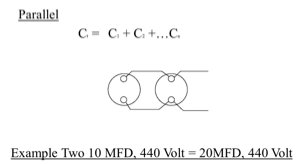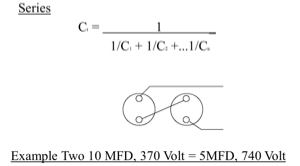
While our customers are wholesalers, Packard knows that you, the contractor, have a choice. You are often presented with many buying options, and being well-informed about your purchase can help make your job easier and more successful. Our Tech Tips are also very helpful for our wholesalers as we present product information that can help as contractors have questions.
This is why we have dedicated a section of our site for contractors and wholesalers. In this section, you will find helpful product tips, tools and some clips from our training classes. We’ve also provided a distributor locator so you can find the nearest wholesaler who can give you access to Packard products.
What should I do if I don’t have the correct capacitor for the motor?
Whether the motor is a fan motor, a blower motor, a compressor motor, a pump motor, or a belt drive motor, if it requires a capacitor, the correct capacitor should be used. The microfarad rating should match what the motor calls for. The capacitor voltage should be equal to or greater than the capacitor voltage designated on the motor nameplate. When the motor is properly loaded, using the correct capacitor will result in the motor operating at its highest efficiency. This will help to prevent the motor from operating at an elevated temperature. As a rule of thumb, if the motor operating temperature increases by 10°C/18°F, motor life is reduced by 50%!
There are those times when the correct capacitor isn’t readily available. What do you do then?
Multiple capacitors can be connected together in series or parallel, which can result in obtaining the right capacitance and/or capacitor voltage.
If you need a higher capacitor rating, connecting two or more capacitors in parallel can result in a higher capacitor rating. In Example 1, if a 20MFD/440 Volt capacitor is required, and two 10MFD/440 Volt capacitors are available, connecting them in parallel results in a 20MFD/440 Volt capacitor.

Example 1
Sometimes, however, you may require a Microfarad rating lower than, or a capacitor voltage rating higher than, what you have available. In those cases, connecting capacitors in series may provide you what is needed. In Example 2, by connecting two 10MFD/370 Volt capacitors in series, a 5MFD/740 Volt capacitor is the result.

Example 2
These are permanent solutions. These capacitors do not have to be replaced with a single capacitor. When connecting two or more capacitors in parallel or series, do not tape or tie-wrap the capacitors together. This will result in heat retention in the capacitors, leading to premature failure. Allow space between the capacitors so that air can flow between them, helping to dissipate heat.
Keep these connection options available. They may save you a trip and allow you to get the customer up and going more quickly.


